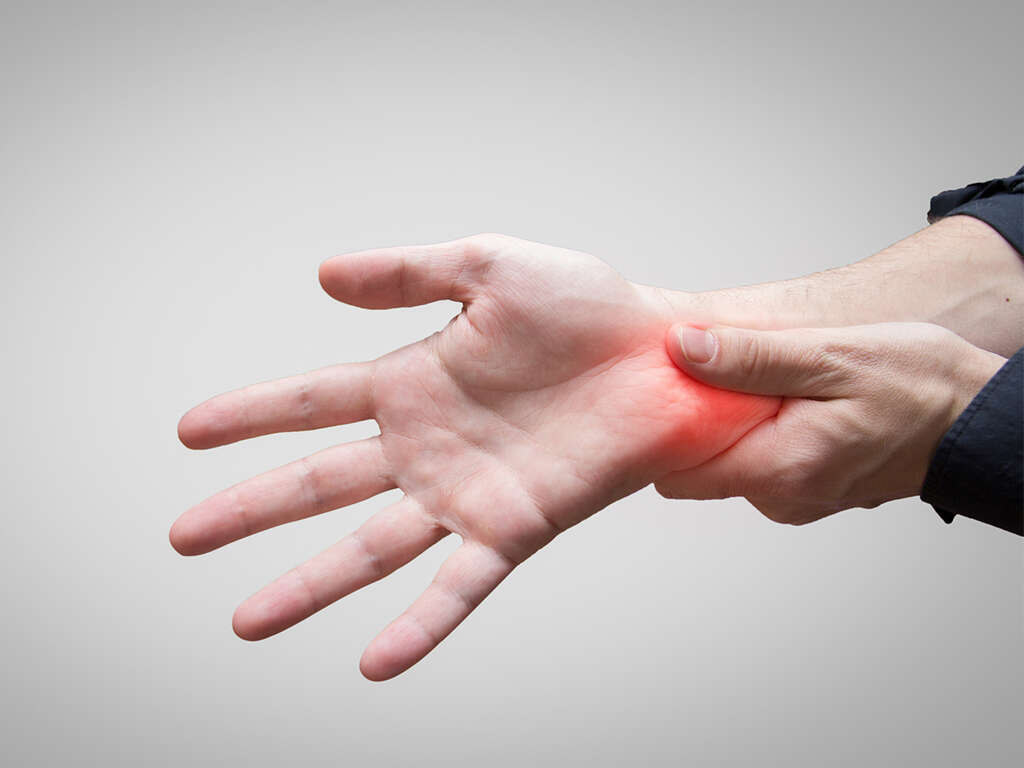10 Broken Wrist Symptoms
A broken wrist refers to a crack or a break in any one of the 10 bones in this complex joint. However, the most common wrist fracture involves the large bone in the forearm called the radius.
A broken wrist is one of the most common forearm injuries. In 2009, there were 72 wrist fractures per 100,000 person’s in the United States, second only to finger ulcerations, which were 221 per 100,000. Finger fractures were third with 68 cases per 100,000 persons.
Most cases of wrist fractures occur at home. Others occur during sports activities and at school. A broken wrist can cause disability and pain that lasts for weeks or months. Because this can affect you or a loved one, it makes sense to familiarize yourself with the following 10 broken wrist symptoms.

Symptom #1: Deformed Wrist
A deformation of the wrist may indicate a wrist fracture. This is the case even if pain or other symptoms are mild. It is worth to note that when a deformation is present, it may indicate that the fracture is severe and may involve actual breakage of one or more bones.
When such a fracture occurs, splinters of bone may be present within the wrist. For this reason, you should ensure that the fractured arm remains in a position of minimal mobility. This should happen even as you take the patient to hospital or wait for an ambulance. This will help reduce further breakage or migration of the broken pieces of bone.

Symptom #2: Pain in the Wrist
Pain in the wrist is one of the most common broken wrist symptoms. This is obvious because a fracture is a serious injury to the bone and probably other tissues including tendons and cartilage. If the fracture is very severe, the pain may be extremely severe. Besides pain, other symptoms like swelling and tenderness may also occur.
To make the injured person a bit more comfortable, you may provide some over-the-counter pain relief medication such as ibuprofen. It is necessary to get the patient to an emergency department as soon as possible, especially where the fracture seems serious by the physical look of it.

Symptom #3: Swelling
A swollen wrist is a sign of a possible broken wrist. This is especially true if the swelling develops rapidly and is accompanied by severe pain, weakness, and inability to grasp with the affected hand.
The broken bone is an injury just like would happen in other tissues. And because bones have a blood supply, the fracture causes bleeding in the affected site. The resultant blood and other body fluids collect in the soft tissue in the surrounding area, which causes swelling. Additionally, inflammation develops as the body’s immune system reacts to the injury and starts working in a bid to achieve recovery.

Symptom #4: Bruising
Visible bruising is another symptom of a broken wrist. However, not all cases of broken wrists present with bruising on the outside surface. This is because the injury to the bone may not involve large blood sources.
Where bruising occurs on the skin, it may also involve bleeding. In some cases, a broken bone may pierce skin. This can indicate that the fracture is serious with a piece of bone breaking off or dislocating from its normal position. In case of bleeding, stop it by applying a sterile bandage or a clean piece of cloth as you take the patient to hospital.

Symptom #5: Numbness or Tingling
The wrist, just like other parts of the body, has nerves and blood vessels serving the tissues within it and passing through it to the hand and fingers. When a fracture occurs in the wrist, the nerves and blood vessels are also affected. Consequently, blood flow may not be as smooth as it should. Some nerves may also be pinched.
If this happens, the nerves may become dysfunctional such that nervous signals traveling to and from the wrist area cannot get through properly. This is what causes numbness or tingling. If you or a loved one has a wrist injury that causes numbness or tingling, in addition to other broken wrist symptoms, you need to get to an emergency department for assessment and treatment.

Symptom #6: Broken Bone Piercing Skin
Besides bruising and swelling, a broken wrist may also present with a part of a bone coming out through the skin. This is a sign of a serious fracture in which a sharp piece of broken bone pierces skin during a fall or an accident.
Such an injury can lead to more serious complications including infection. For this reason, in the case of a broken wrist in which a bone pierces through skin, it is critical to seek medical attention without delay. You should also protect the injury from possible infection by wrapping it with a sterile bandage or a clean piece of cloth as soon as possible following the injury.

Symptom #7: Weakness and the Inability to Grasp
Obviously, a broken wrist is unlikely to perform as it would without the fracture. Weakness and the inability to grasp are, therefore, symptoms of a wrist fracture, especially where they occur together with other symptoms like swelling and pain.
For the wrist to do its part as part of the arm, the bones, tissues, ligaments, and nerves should be aligned in a specific way. Disruption of this alignment by an injury can mean that the rest of arm cannot work as it normally does. Consequently, a person with a broken wrist can experience weakness and the inability to grasp with the affected arm.

Symptom #8: Bleeding
A broken wrist injury involves breakage of one or more bones. But, when this happens, other tissues are usually also affected and, as discussed elsewhere, bleeding can occur internally. But bleeding may also occur outwardly if significant damage affects the blood vessels close to the surface.
While the damage may result from external force against the wrist, it could also result from a broken bone piercing through the skin. This can cause more serious bleeding because it will usually involve damage to internal tissues including larger blood vessels. Give first aid to arrest the bleeding as soon as possible. Clean the injury and cover it with a sterile bandage or clean piece of cloth as you arrange for transport of the patient to hospital.

Symptom #9: Discoloration
A broken wrist can also cause skin discoloration on the affected site. Skin color usually darkens in addition to other broken wrist symptoms like pain and swelling. Discoloration happens due to the damage caused by the injury and is a sign of bruising, even where it may not be visible.
Discoloration usually occurs during a fall as you try to support yourself on an outstretched hand. If the discoloration is not accompanied by pain, deformation, weakness, or swelling, you are probably free of a fracture and may not need treatment. However, where some of these other symptoms are also present, you need to visit a hospital or a clinic for assessment and treatment.

Symptom #10: Reduced Mobility
A broken wrist will normally cause reduced mobility of the wrist joint. This is due to the same reasons that cause weakness in the joint and the hand. As mentioned elsewhere, some sort of stability is required in the bones, tendons and ligaments, blood vessels, and nerves for the wrist to operate properly.
Unfortunately, a fracture of the wrist can interfere with this stability. This disruption affects the coordination of the components of the joint, causing a reduction in the range of motion of the wrist. To minimize the risk of further damage, limit movement of a suspected broken wrist until after assessment to determine required treatment.











